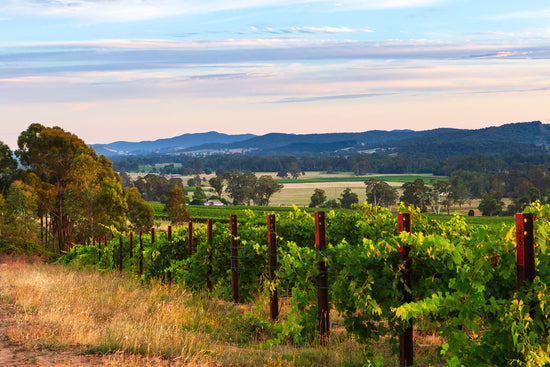There has been talk in wine circles for over twenty years of a Rosé Revolution. I’m not sure if it’s actually happened yet, but our rosé story is more of an evolution than a revolution.
Have you ever noticed that if you cut into a red grape, the flesh inside is a translucent white colour? This means the juice of just-crushed red grapes has no colour. Rosé is usually made from red grapes with the amount of skin-to-juice contact time determining the colour.
So, half the fun of drinking rosé is the range of gorgeous pink hues that it comes in, and half the fun of making rosé is working out how long to let the juice sit with the skins, aiming somewhere between a deep watermelon pink and the palest salmon pink.
When we first made rosé in 2001, we went for that deep pink colour. The grape juice spent 24 hours sitting with its crushed skins and soaked up lots of colour.
The first few years that we made rosé it was as a by-product of our Sangiovese making. We strained off a portion of the Sangiovese juice destined to make red wine 24 hours after it was crushed, in order to give the red wine more intensity of colour, flavour and tannins.
In the spirit of Alfred Pizzini’s deep aversion to throwing anything away (see Over a Barrel, pg. 3) we decided to make it into rosé and if we liked it, we’d introduce it to our range.
In the early days, the grapes used for our rosé were fully ripe, as they were destined for our red Sangiovese, this put the rosés at 13% or 14% alcohol. Since then the evolution has been to lower alcohol and lighter colour. From the original 24 hours maceration in 2001, to 10 hours in 2008, now we are down to 6 or 7 hours at most. And the colour is a lovely, pale salmon or onion skin pink.
Our rosé is no longer a by-product of our red wine production. One of our oldest Sangiovese vineyards, planted with the first clone of Sangiovese that was imported into Australia, is now fully devoted to rosé production. The clone is known to produce light, fragrant Sangiovese, just right for rosé.
We named our rosé after the matriarch of the family, Rosetta Pizzini. Fortunately, she loved the wine and it quickly became her preferred tipple. In true European style, she would have a little glass with lunch and a slightly bigger glass with dinner, never any more than that.
The glasses she used at dinner time were 1970s vintage, gold- embossed wine glasses she had won at lawn bowls, the gold worn off by the dishwasher years ago. Again, waste not want not, why have glasses sitting on the shelf collecting dust when they could be used?
So, we always give a nod to Nonna Rosetta when we open a bottle of Rosetta rosé; although we could never be sure whether it was her preferred tipple because it went so well with the rustic Italian-style flavours of her cooking, or because it was named after her... probably a bit of both.
Joel Pizzini





